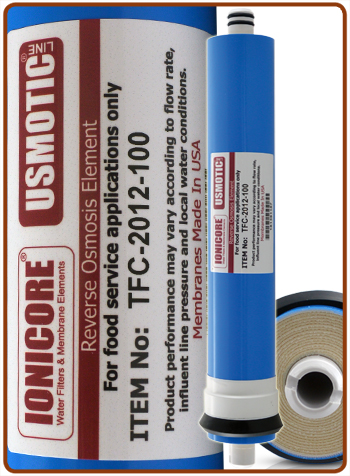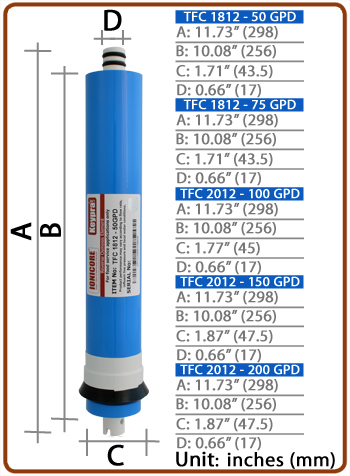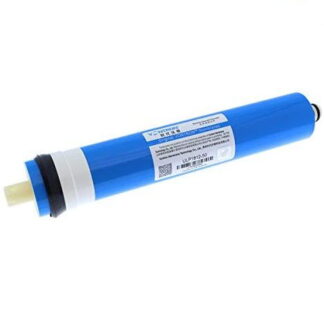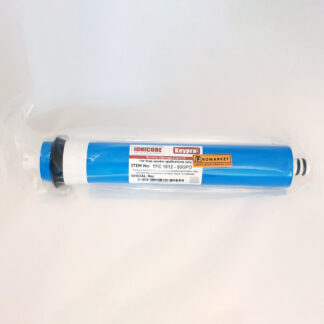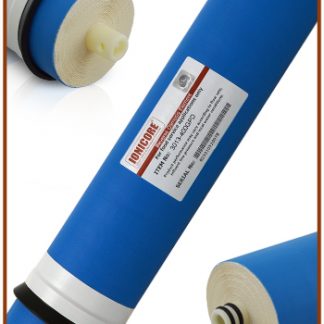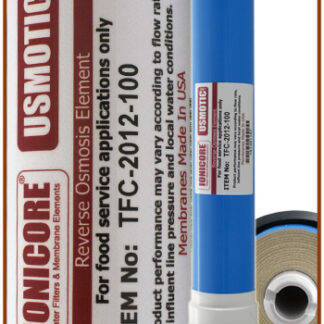Description
The reverse osmosis (abbreviation: RO, from English Reverse Osmosis) is the process that represents the better water filtration technique because is not a simply unwanted substances reduction but is able to remove contaminants, harmful and mineral salts at the ionic level. The RO membrane element is generally made of polyamide (PA).
These R.O. TFC (thin film composite) membranes are available in flow rates ranging from 50 to 200 Gallons per day for use in standard residential membrane housings. All models are certified to NSF/ANSI 58 for the reduction of Arsenic (“V” pentavalent), Barium, Cadmium, Chromium (Hexavalent), Chromium (Trivalent), Copper, Cysts, Turbidity, Fluoride, Lead, Radium 226/228, Selenium and TDS and are certified D.M. 174/2004 (Italian Ministerial Decree). The membrane removes up to 98% of total dissolved solids (TDS), delivering healthier and safer drinking water.
Features:
* High Rejection & Flow Rate
* Standard dimensions: can be fitted in any RO systems
* Max. inlet Hardness: 25°F. (250ppm)
* Max. Free Chlorine: 0.1 ppm
Type of membrane: Spiral wound
The membrane consists of 3 layers
1. Cross-linked fully aromatic polyamide 0.2 µm.
2. Polysulfone 40 µm.
3. Non-woven fabric polyester 120 µm.
Spacer: EPDM
Active surface:
100 GPD 0.52 m2 (5.6 sq. ft)
TFC Nominal Rejection Characteristics:
Calcium: 93-98%
Sodium: 92-98%
Magnesium: 93-98%
Potassium: 92-96%
Manganese: 96-98%
Iron: 96-98%
Aluminum: 96-98%
Copper: 96-98%
Nickel: 96-98%
Cadmium: 93-97%
Silver: 93-96%
Zinc: 96-98%
Mercury: 94-97%
Hardness Ca & Mg: 93-97%
Radioactivity: 93-97%
Chloride: 92-95%
Ammonium: 80-90%
Bromide: 90-95%
Phosphate: 95-98%
Chromate: 85-95%
Cyanide: 85-95%
Sulfate: 96-98%
Thiosulfate: 96-98%
Silicate: 92-95%
Silica: 80-90%
Nitrate: 90-95%
Boron: 50-70%
Borate: 30-50%
Fluoride: 92-95%
Polyphosphate: 96-98%
Orthophosphate: 96-98%
Chromate: 85-95%
Virus and Bacteria: 99% +
Lead: 95-98%
The rejection percent can vary on the basis of pressure, PH, temperaure and general water quality of the feed water.
WARNING
The reverse osmosis is not a device that makes water drinkable (non-drinkable water into drinkable water) and it works only if it’s installed on water complies with the law, municipal potable water or well water if previously made drinkable with adequate and effective systems, preventively studied and personalized for that kind of water. Do not use the system where the water is microbiologically dangerous or of unknown quality without adequate disinfection before and after the system. All systems must be preserved according to the producer’s instructions. The pollutant parts removed or reduced by this system are not necessarily in your water. Suggest replacement of membrane elements: when flow comes too slow or at least 24 months.
This post is also available in: Italiano (Italian)



